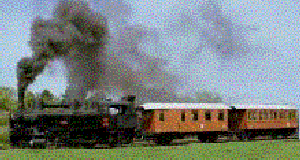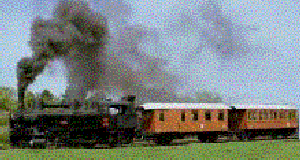|
|
|
|
|
|
Kinkel
Cycle Theory 5![]()
The nature of the TIME 3
| Themes
: Timedilatation
On this page - time 3 - why does gravitation has influence on the time - which
influence does the limit of the speed of light (at ~ 300000 km/sec.)
has
on the time dilatation
- Time
dilatation - formula for calculation of
- SUITCASE
in the train - how does the suitcase falls to the
- the NOW (the present) - how long does one instant lasts? |
|
Standard time Standard time is considered as the existing time in the free matter and free radiation area far away of suns. This area can shrink due to new mass or radiation and thus the time stretches. But
then the standard time is not existing anymore. Such area with standard
time (universe time) can be found in the free matter e.g. area between
the galaxies.
Prefaces:
Example: If we drive in a train through a railway station, the station clock runs for us in the train, in our reference system, a little slowler than for persons on the platform. Thus the platform becomes for us somewhat shorter while driving past. Thus the area shrank and the time stretches. The
shrinking of the area (thus a change of the space characteristics) draws
a time slow down with itself by law of nature. By the same laws of nature,
the apple falls from the tree on the meadow.
If
2 trains collide frontally together, then the barrier impact speed
The
main core - we come now to the topic:
The
3.rd principle of special relativity theory is: The mass is not constant.
The mass of moving bodies grows. (not the number of atoms) - that is the
relativistic mass increase.
Length
of time in the moved reference system
The
higher is the speed, thus the relationship V to tb, the larger is the time
slow down; and the smaller is the result for tb according to o.g. the above
Formula.
The
initial value was v/c = 0,8. This results in the table code ta'/tb
to 0,6. This is directly under the 0.6 in the table T1.
The
same result is also registered above (marked in colour) in the formula
(diagram F1). The table codes show the results from the
With
V/C = 0.5 = 50% of the speed of light amounts to the ratio
|
|
SUITCASE in the TRAIN How does the suitcase falls to the ground - Comparison of the observer in the train and outside the train - with and without air resistance Closed train 
Animation K1 - The observer in the train sees the suitcase fall exactly perpendicularly. Closed train Closed train 
Animation K2 - The observer outside the train at the railway embankment sees the same suitcase fall diagonally. The
experiment can be understood by everyone in a driving car,
The falling of the suitcase lasts a certain time, just says exactly 1.1 seconds. The observer, who is standing outside at the railway embankment, however sees the longer drop way of the suitcase – the direct diagonal fall. The observer in the train, sees a shorter drop way - the direct perpendicular fall. Thus the drop way for the observer at the railway embankment must last longer than for the observer in the train. That
is however impossible, since both of them see the same falling suitcase.
Thus the time does not pass the same for both of the observers. It lasts one second longer for the observer standing at the railway embankment than for the observer in the train. For both of them, the suitcase hits after 1,1 seconds, however in each case within another time frame.
|
*~*:._.:*~*:._.:*~*:._.:*~*:._.:*~*:._.:*~*:..:
_.: * ~ *:. _.: * ~ *:. _.: * ~ *:. _.: * ~ *:. _.: * ~ *:. _.: *
*~*:._.:*~*:._.:*~*:._.:*~*:._.:*~*:._.:*~*:..:
_.: * ~ *:. _.: * ~ *:. _.: * ~ *:. _.: * ~ *:. _.: * ~ *:. _.
Author: Robert
Kinkel, Dipl. Ing., on 2006.2.2. after Christ
Translation:
German in English Tara Kinkel in spring 2006
*~*:._.:*~*:._.:*~*:._.:*~*:._.:*~*:._.:*~*:..:
* ~ *:. _.: * ~ *:. _.: * ~ *:. _.: * ~ *:. _.: * ~ *:. _.: * ~ *:. _.:
* ~ *:.
*~*:._.:*~*:._.:*~*:._.:*~*:._.:*~*:._.:*~*:..:
* ~ *:. _.: * ~ *:. _.: * ~ *:. _.: * ~ *:. _.: * ~ *:. _.: * ~ *:. _.:
* ~ *:.
|
|
|
|
|
|
|
|
|
|
:*~*:._.:*~*:._.:*~*:._.:*~*:._.:*~*:._.:*~*:. : * ~ *:. _.: * ~ *:. _.: * ~ *:. _.: * ~ *:. _.: * ~ *:. _.: * ~ *:. _.: * ~ *:.
|
|
|
|
|
:*~*:._.:*~*:._.:*~*:._.:*~*:._.:*~*:._.:*~*:._.:*~*:.
|
|
||||
| KinkelZyklentheorie1 |
2 |
3 |
4 |
5 |

:*~*:._.:*~*:._.:*~*:._.:*~*:._.:*~*:._.:*~*:._.:*~*:._.:*~*:.
|
|
|||||||||||||||||||||
| Cosmology GERMAN | 1 | 2 | 3 | 4 | 5 | 6 | 7 | 8 | 9 | 10 | 10a | 10b | 11 | 12 | 13 | 14 | 15 | 16 | 17 | 18 | 19 |
|
|
||||||||||||
|
:.:.:. ::..:..: *::. : * ~ *: *:..: * ~ *:. : * ~ *:..: * ~ *..: * ~ *:. : * ~ *:..: * ~ *:..: * ~ *:..: * ~ *:. : * ~ ~ *:. _.: * ~ * ~ *:..: * ~ *:..: * ~ *:. : * ~ *:..: * ~ *:. _.: * ~ *:..: * ~ * ~ *:. _.: * ~ *:. : * ~ *:..: * ~ *:. _.: * ~ *:..: * ~ *:..: * ~ *:. _.: * ~ *:. :..: * ~ *:..: * ~ *:. _.: * ~ *:..: * ~ *:..: * ~ *:. _.: * ~ *:..: *. : ~ *:..: * ~ *:..: * ~ *:. _.: * ~ *:..: * ~ *:..: * ~ *:. _.: * ~ *:..: * ~ *:. ~ *:. _.: * ~ *:. _.: * ~ *:. _.: * ~ *:. _.: * ~ *:. _.: * ~ *:. _.: * ~ *:. _.: *:. .: * ~ *:. *:..:*~*:..:*http://www.cybertaro.de/ .: *.:*~*:. . :*~*:.. : :.:*~:*~*:..:*~*:.http://www.kinkel bischem.de/ :*~.:*~*:..:*~*:.. *:. _.: **.:**:._.:*~*:._.:*~*:._.:*~*:._.:*~*:._.:*~*:._.:*~*:._.:*~*
mailto:webmasters@kinkel bischem.de D-Frankfurt/M Website opens on 2006.2.2. Update 11.11.2006 |
||||||||||||